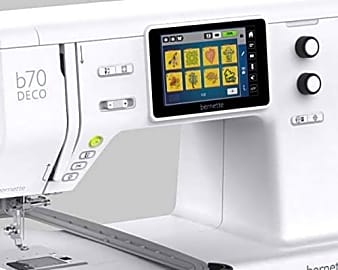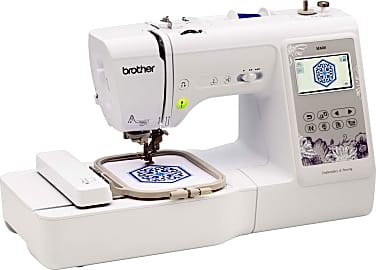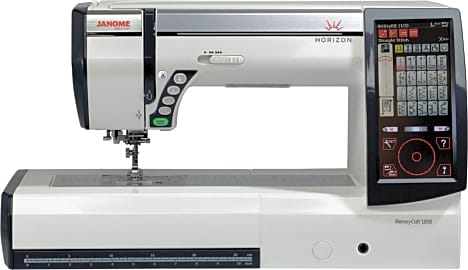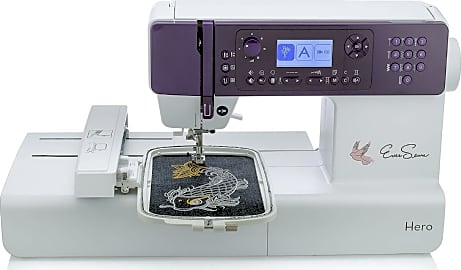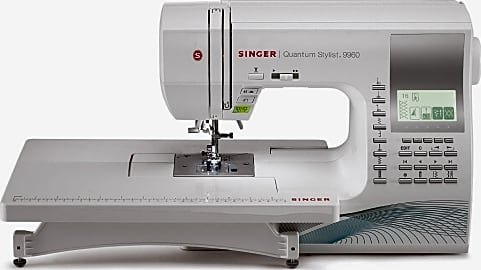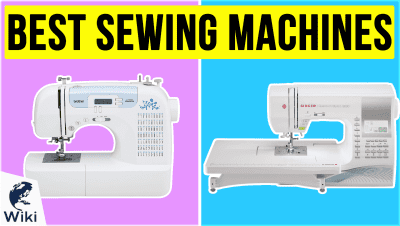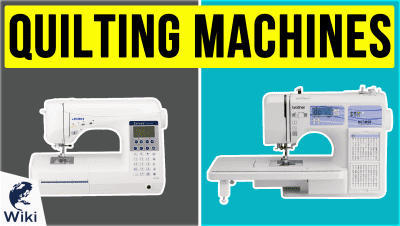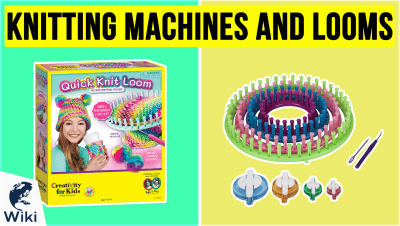The 8 Best Embroidery Machines

This wiki has been updated 41 times since it was first published in February of 2015. Whether you are a home hobbyist or a professional selling to stores or online, our comprehensive selection of feature-rich embroidery machines includes something for everyone. Most of today's models come with USB connectivity, online support to make it easy even for beginners, and a variety of preprogrammed stitches and designs. We've included combination options that sew well, too. When users buy our independently chosen editorial recommendations, we may earn commissions to help fund the Wiki.
Editor's Notes
July 17, 2020:
Thanks to their durability, relative affordability, and user-friendly features, the Brother SE600 and the Brother PE800 still make great choices for most at-home, casual sewers. The PE800 has over 138 built-in designs, while the SE600 has 80, and as you might guess, the former is more expensive and more feature-heavy in general. Its hoop is a little bigger, too, so if you need a lot of space and versatility, it's the one to choose.
While Brother models remain popular, we've added the Bernette 70 Deco, too. It offers many features found on substantially more expensive models, such as the Janome Memory Craft 12000. Note that this Bernette was made expressly for embroidery, unlike some models that also function as a sewing machine. If you don't have the space or budget for two separate machines, the Singer Quantum Stylist 9960 remains a workable option, although it does have occasional issues with jamming and bird's nests. Consider this one if you're willing to be patient and work with it.
June 11, 2019:
It can be tough to find a high-quality, dedicated embroidery machine that doesn't cost a pretty penny, but we've found options that even beginners can afford, including combination sewing/embroidery machines that are perfect for aspiring designers on a budget. At the top of this category are the Brother SE600 and the EverSewn Hero. We've chosen the former to replace the similar but less feature-heavy SE400, since it's easier to find and has an upgraded color screen. The Hero is a new addition from a brand that perhaps isn't as well-known as some of the big names; nevertheless, this brand is developing a following and produces affordable options for at-home use. As to dedicated embroidery machines, we like the Brother PE800, an upgrade over the discontinued PE700. It is plenty versatile for most applications, and features a total of nine fonts: seven English, one Japanese, and one Cyrillic.
Finally, a brief word about Singer. Issues with poor durability and the need for repeated servicing seemingly plague this brand's embroidery machines, so we have removed all but the Singer Quantum Stylist 9960. It's a combo machine that lets you tackle small, restricted embroidery projects. If you are devoted to Singer, you might consider it; otherwise, a Janome or Brother model may be the better choice.
Special Honors
Janome MB-7 Baseball caps are a popular choice for embroidery, but they can also be something of a hassle, unless you have this Janome MB-7, that is. It's a seven-needle machine that can bring your designs to life, whether you wish to use the 50 built-in patterns or create your own. janome.com
Bernina 500 Even if you're new to the crafting world, you should be able to produce eye-catching results with the Bernina 500, which is packed with features that give consistent, attractive results. Plus, its automatic elements save you time, so you can get more done. bernina.com
Husqvarna Viking Designer Epic The Husqvarna Viking Designer Epic certainly lives up to its name, from the large screen that functions like a tablet to the huge working area that lets you work on quilts, curtains — you name it. Of course, this means it's both more complicated and more expensive than many, but for the serious seamstress, the benefits may be worth it. husqvarnaviking.com
Three Types Of Embroidery Machines And Their Benefits
Free-motion uses a standard sewing machine that operates in tiny zigzag movements.
There are three types of embroidery machines, and each is best for a specific application. Free-motion uses a standard sewing machine that operates in tiny zigzag movements. This kind of device can be wonderful or annoying depending on why you need to embroider. If you run a business that requires you to create totally unique patterns every day, such as a custom luggage store where you put terms like people’s names or birthdates on backpacks, you can benefit from a free-motion embroidery machine because you don’t necessarily need perfection so much as freedom. Manufacturers of printed clothing and luggage love embroidery because it lasts longer than screen printing. A free-motion model can be limiting, however, because it usually has just one needle, meaning each time you want a new color, you have to rethread it.
In the commercial world, machines with link stitch technology or digitizing capabilities are very popular because they allow for free motion, but they also have a memory that can save patterns and automatically create them. Embroidery machines with digitizing capabilities are quite versatile because, if you need to apply both unique and repeated designs to a product each day (for example, somebody’s last name plus the image of a sunflower) you can use the manual feature to write the name, and the automatic feature to pump out the perfectly uniform sunflower.
The most modern embroidery machines are computerized. They can connect to your computer or laptop, allowing you to access virtually limitless designs and patterns. A computerized embroidery machine is capable of the most complex designs and can produce patterns with multiple heads and threads. Your favorite clothing brand with complex patterns on the jean pockets probably uses one of these because they have multiple needles. This allows them to run several colors at once and work very quickly.
The History Of The Embroidery Machine
A typical embroidery machine today might be about the size of a few desktop speakers or a small fish tank and it can definitely fit on your kitchen table. But the first embroidery machine invented took up about as much space as a big city apartment today.
In order to operate it, an embroiderer would need to use both hands to manage the scribe and needle, and his foot to control the clamps that held the needle.
The creator of this behemoth of a device was Josue Heilmann, and his invention could do the handwork of about four people. The unit consisted of a frame that held the fabric taut, a needle assembly and a handle to maneuver the needle. In order to operate it, an embroiderer would need to use both hands to manage the scribe and needle, and his foot to control the clamps that held the needle. If it sounds like an image from a great Greek legend like The Odyssey, that’s because it looks just like the one Penelope used. Surprisingly, people didn't welcome Heilmann’s invention with open arms. Companies worried that his machine would put too many hand embroiderers out of a job and he only managed to sell two products.
After the industrial revolution took hold, people no longer feared mechanisms that could do work for humans – or at least they feared them less — and several inventors came up with newer, smaller, and faster versions of embroidery machines. The year 1911 saw the first multi-head model from the Singer Sewing Company, however, wartime put a halt to the use of embroidery machines for any purpose that wasn’t helping the national cause, so their sales slowed. By the 1950s there was a boom in at-home machines, and the 1980s saw the first computerized version.
Contemporary Embroidery Artists
In an age when everything old is new again, when there seem to be a burgeoning interest in vintage and resale clothing and furniture, it should come as no surprise that a few modern artists have made a name for themselves with the “old” craft of embroidery.
Izziyana Suhaimi focuses on our current culture of instant gratification, and what better medium to use than the slow and tedious craft of embroidery.
Inge Jacobsen has become widely appreciated because she takes famous consumer images, such as a Vogue cover or a clothing brand ad, and recreates them through embroidery, often altering the original piece slightly to evoke meaning and highlight underlying sentiments. American Express commissioned the artist to do just that with three of its classic cards.
Another fascinating artist is Kirsty Whitlock, who combines recycled materials and traditional, hand embroidery to communicate ideas of social responsibility. Through her art, she brings to light and lightly criticizes the throw away culture in which we live. One famous piece depicts a stock market professional reading an embroidered Financial Times, made from old wire and other materials, disintegrating in his lap.
Izziyana Suhaimi focuses on our current culture of instant gratification, and what better medium to use than the slow and tedious craft of embroidery. She often combines images of contemporary and traditional cultures to show their connections and usually stacks impressively immaculate stitchwork over evocative drawings.


